Review Article
Volume 1 Issue 1 - 2017
Neonatal Abstinence Syndrome (NAS): Neurodevelopmental Challenges, Current Treatments and Future Directions
aDepartment of Pharmaceutical Science and Research, School of Pharmacy, Marshall University, Huntington, WV, USA
*Corresponding Author: Shekher Mohan,
Department of Pharmaceutical Science and Research, School of Pharmacy, Marshall Univer
-
sity, One John Marshall Drive, Huntington, WV, USA.
Received: February 03, 2017; Published: March 07, 2017
Abstract
Opioid dependence is at epidemic levels worldwide and here in the USA it is estimated that over 2.1 million people are suffering from substance use disorders related to prescription opioid pain relievers. With its growth, opioid abuse has significantly extended into the pregnant population, which has allowed for increased risk of adverse pregnancy outcomes such as neonatal abstinence syndrome (NAS). Neonatal abstinence syndrome is a significant cause of morbidity and mortality in term and preterm infants. Neonatal abstinence syndrome has become an epidemic as it was the greatest single reason for neonatal hospital admissions in the United States in 2015. This review summarizes how opioid exposure in-utero may affect neurodevelopment and thus neurobehavior in babies born with NAS, with particular emphasis on the Locus coeruleus (LC)-noradrenergic system. We also discuss the currently available pharmacological care for both the opioid abusing mother, as well as the care for babies born with NAS, and provide some narrative on future directions to best help this population of NAS babies as they mature into children and young adults.
Keywords: Addiction; Babies; Brain; Neonate; Morphine
1. Introduction
The use and abuse of drugs, alcohol and tobacco contribute significantly to the burden of society. The 2014 National Survey on Drug Use and Health reported that 27 million people aged 12 or older used an illicit drug in the past 30 days. This is approximately 1 in 10 Americans (10 percent) [1]. The increase in illicit drug use continues to be driven by marijuana (22.2 million illicit users) and the nonmedical use of prescription drugs such as pain relievers (4.3 million illicit users), with the 18 to 25-year-olds being the largest group of illicit users [2]. Compared to the illicit use of prescription opioid pain relievers, heroin use has increased in the population; it is estimated that heroin use in 2014 among people aged 12 or older was higher than that estimated between 2002 and 2013. Individuals prescribed opioids for pain frequently become tolerant to the analgesic properties of these drugs such that, if not controlled, can often lead to the development of addiction. Following the completion of the prescribed pain therapy regimen, patients may seek to satisfy their addiction elsewhere, such as with the purchase of illicit prescription opioids and they may subsequently turn to heroin as an easier, cheaper alternative to achieve the desired reward. With current data suggesting that the highest incidence of opioid abuse is among the Medicaid population, this form of substance abuse is widely associated with lower-income individuals and those who are already predisposed to a higher risk of physical and mental health illnesses [1].
The most frequently prescribed opioids among women in both the Medicaid and privately insured groups are hydrocodone, codeine and oxycodone. Long-term opioid use amongst the female population of Medicaid enrollees in 2005 treated for non-cancer pain, ranged from 62% among those aged 19 to 44 years to 98% among those aged 45 to 65-year-old [2]. Thus, it is evident that more interventions are needed to better manage opioid treatment and perhaps improvements are needed to help educate females of childbearing age, as it is important to understand the effect prenatal opioid use has on the fetus and thus the short and long-term effects on a child’s development. Opioid exposure during childbearing ages (15 to 44 years) suggests increased risk of adverse pregnancy outcomes, such as Neonatal abstinence syndrome (NAS) and long-term birth defects. Neonatal abstinence syndrome has become an epidemic, as evidence has shown that it was the single greatest cause for neonatal hospitalizations in the US in 2015 [3]. Between 2000 and 2012, there has been a five-fold increase in the incidence of NAS, from 1.2 to 5.8 live births per 1,000 diagnosed respectively. During this 12-year period of time it was seen that infants born with NAS occupied, on average 16.9 days’ hospital stay postpartum, relative to the 2 days seen by most non-NAS infants [3].
Opioids are most commonly seen in the precipitation of NAS and work through the G protein-coupled receptors (mu, kappa and delta opioid receptors) located throughout the central and peripheral nervous systems, as well as the gastrointestinal system [4]. Notably, neonates are born with mu opioid receptors similar to those of an adult, while kappa and delta opioid receptors are still developing in the neonatal brain [5]. Neonates chronically exposed to opioids and thus activation of these receptors while in-utero, will experience symptoms of NAS with the abrupt discontinuation of these mechanisms after birth. This leads to increased activation of adenylyl cyclase (AC) activity, ionic imbalances and increased neurotransmitter activity through enzymatic cascades. Presentation of NAS symptoms are suggestive of such imbalances and are subsequently managed through medicinal opioid therapies, to first achieve homeostasis and then to slowly wean the infant off the potential opioid substance either in question or detected via analytical laboratory tests.
Neonatal abstinence syndrome is the manifestation of symptoms presented by newborns shortly after birth due to the abrupt discontinuation of trans-placental exposure to licit or illicit substances throughout pregnancy. Neonatal abstinence syndrome presents as a variety of symptoms that include neurological: tremors, irritability, wakefulness, exaggerated Moro reflex, seizures, sneezing and yawning; gastrointestinal: poor feeding, vomiting, diarrhea, dehydration, poor weight gain; and autonomic dysfunction: fever, temperature instability, sweating, nasal stuffiness, and mottling [6]. Based on a national survey taken in 2006, the most widely (65%) used method to diagnose NAS and measure base lines to initiate treatment in the US is the Finnegan Scoring System [7]. The Finnegan scoring system was developed in 1975 as a clinical, investigative tool to quantify the severity of NAS in full-term babies that presented with symptoms. The Finnegan scoring system assesses the passively addictive infant in a comprehensive and objective manner to help provide an accurate evaluation of the clinical state of the NAS infant undergoing withdrawal. This scoring system can be helpful for initiating, monitoring and terminating treatment in neonates. This scoring system has also allowed for the development of set, uniform criteria for the assessment and treatment of the NAS infant to the addicted mother following discharge. Diagnoses and treatment of clinical symptoms has become substantially more complex as the variety and type of drugs being abused in-utero has increased. Additionally, the duration of prenatal drug exposure can significantly impact the diagnose of NAS, and thus its impact on neurodevelopment [6]. However, before we discuss changes in neurodevelopment, it is important to state that the symptoms associated with polysubstance-mediated NAS can correlate and are generally more severe than when compared to the abuse of a single drug substance such as hydrocodone. The primary focus of this article is to highlight the potential developmental challenges that could present in infants diagnosed and treated for NAS following prenatal opioid exposure.
2. Neurodevelopmental Challenges of NAS -
Currently, the neuropathology behind opioid-mediated NAS is unknown and, therefore, warrants further research to improve our understanding of the mechanisms responsible for opioid withdrawal in neonates – this could positively impact the clinical outcomes (short and long-term) of all babies born with NAS.
Currently, the neuropathology behind opioid-mediated NAS is unknown and, therefore, warrants further research to improve our understanding of the mechanisms responsible for opioid withdrawal in neonates – this could positively impact the clinical outcomes (short and long-term) of all babies born with NAS.
The physiochemical properties of opioids (i.e. lipophilicity) allows for easy transfer across the placenta to the fetus, and this transmission of opioids increases as gestation increases [8]. To improve our understanding of the mechanism responsible for opioid withdrawal in neonates, a better understanding of how opioids metabolize in the placenta and fetus is needed. Opioid withdrawal is a complex phenomenon in adults and is further complicated in neonates due to immature neurological development and variations between fetal exposure to opioids (i.e. pharmacokinetics) mediated by the placenta.
Improving our understanding of the in-utero metabolism and effects of opioids will allow us to predict how sustained exposure may affect the development of the neonate and then develop potential treatment strategies (i.e. agents and treatment protocols) that may improve clinical outcomes of these babies.
2.1 Opioid receptor signaling
Using opioid withdrawal data obtained from research conducted in adults, it is possible to predict the impact of opioid exposure may have on the developing brain. For example, opioid receptors-mu, kappa and delta are expressed throughout the CNS in both adults and neonates, and therefore, similar G-protein-driven signaling could be predictable. During opioid withdrawal, stress, growth factors and neurotransmitters can cause a cellular superactivation of adenylyl cyclase (AC)/cAMP signaling which then can result in increased activity of protein kinases (PK) (i.e. mitogen activated PK) and increased expression of transcription factors (i.e. CREB) [9]. If not regulated, the pathological consequences of CREB activation could result in either increased or decreased levels of neurotransmitters (i.e. norepinephrine and glutamate) that might be responsible for some of the symptoms that characterize NAS. For example, during opioid withdrawal, supraphysiological levels of norepinephrine can cause hyperthermia and tremors in babies with NAS [10]. In contrast, decreased levels of serotonin in the CNS can be responsible for sleep deprivation in babies with NAS [11].
Using opioid withdrawal data obtained from research conducted in adults, it is possible to predict the impact of opioid exposure may have on the developing brain. For example, opioid receptors-mu, kappa and delta are expressed throughout the CNS in both adults and neonates, and therefore, similar G-protein-driven signaling could be predictable. During opioid withdrawal, stress, growth factors and neurotransmitters can cause a cellular superactivation of adenylyl cyclase (AC)/cAMP signaling which then can result in increased activity of protein kinases (PK) (i.e. mitogen activated PK) and increased expression of transcription factors (i.e. CREB) [9]. If not regulated, the pathological consequences of CREB activation could result in either increased or decreased levels of neurotransmitters (i.e. norepinephrine and glutamate) that might be responsible for some of the symptoms that characterize NAS. For example, during opioid withdrawal, supraphysiological levels of norepinephrine can cause hyperthermia and tremors in babies with NAS [10]. In contrast, decreased levels of serotonin in the CNS can be responsible for sleep deprivation in babies with NAS [11].
2.2 Locus coeruleus (LC)-noradrenergic system
A focus of this article is to highlight regions of the brain that are affected by sustained opioid exposure in the developing fetus. A key region of the brain involved in opioid addiction and subsequent withdrawal is the locus coeruleus (LC) of the pons [12]. The LC is involved with the physiological response to stress and panic and as the principle site for the synthesis of noradrenaline it known as the LC-noradrenergic system. The LC is composed of medium-sized neurons and has high concentrations of neuromelanin formed by the polymerization of noradrenaline. The projections of the LC are vast and potential damage to these nucleus of the pons during development could be devastating. For example, the LC innervates the spinal cord, brain stem, cerebellum, hypothalamus, thalamus, tectum, amygdala, ventral tegmental area and the cortex. These projections from the LC are noradrenergic and, therefore, generally excitatory and thus mediate arousal and prime the brain to be activated and ready to respond to stimuli. In addition to outputs, the LC also receives inputs from numerous regions of the brain. For example, the medial prefrontal cortex, nucleus paragigantocellularis lateralis (located in the ventrolateral medulla) and the nucleus praepositus hypoglossi all provide inputs to the LC. Therefore, due to its broad function and roles, damage to and diminished development of the LC-noradrenergic system in the brain of the fetuses exposed to opioids could be responsible for changes in neurodevelopment and behavior in NAS babies later in life.
A focus of this article is to highlight regions of the brain that are affected by sustained opioid exposure in the developing fetus. A key region of the brain involved in opioid addiction and subsequent withdrawal is the locus coeruleus (LC) of the pons [12]. The LC is involved with the physiological response to stress and panic and as the principle site for the synthesis of noradrenaline it known as the LC-noradrenergic system. The LC is composed of medium-sized neurons and has high concentrations of neuromelanin formed by the polymerization of noradrenaline. The projections of the LC are vast and potential damage to these nucleus of the pons during development could be devastating. For example, the LC innervates the spinal cord, brain stem, cerebellum, hypothalamus, thalamus, tectum, amygdala, ventral tegmental area and the cortex. These projections from the LC are noradrenergic and, therefore, generally excitatory and thus mediate arousal and prime the brain to be activated and ready to respond to stimuli. In addition to outputs, the LC also receives inputs from numerous regions of the brain. For example, the medial prefrontal cortex, nucleus paragigantocellularis lateralis (located in the ventrolateral medulla) and the nucleus praepositus hypoglossi all provide inputs to the LC. Therefore, due to its broad function and roles, damage to and diminished development of the LC-noradrenergic system in the brain of the fetuses exposed to opioids could be responsible for changes in neurodevelopment and behavior in NAS babies later in life.
Noradrenergic neurons were once thought to be exclusively present in the LC; however, noradrenergic neurons are also found scattered throughout the lateral tegmental area of the pons and medulla. Due to the extensive projections of the midbrain noradrenergic neurons from the LC, it is widely thought that the LC has functional roles in all forebrain activities, including perception, cognition and memory formation [13]. The function of noradrenergic neurons from the LC is tightly regulated and thus correlated with the state of arousal [14]. In addition to the activation of noradrenergic neurons to stimuli, many studies have shown that noradrenaline promotes changes in synaptic function by ‘gating’ the induction of long-term synaptic plasticity of glutamatergic synapses [15,16]. Therefore, with its repertoire of effects, the hypothesis that the LC-noradrenergic system is critical in coordinating the activity of cortical and subcortical circuits for the integration of sensory activity and working memory could mean that babies with NAS could have changes in cognitive functions such as perception, attention, learning and memory.
In opioid withdrawal, the LC-noradrenergic system is hyperactive partly due to increased glutamate transmission provided by input from neurons in the nucleus paragigantocellularis lateralis and by increased hyperactivity in regions of the brain that are innervated by these neurons. Noradrenergic neurons of the LC are inhibited by acute exposure to exogenous opioids, a mechanism mediated by activation of inward-rectifying K+ currents through coupling with the Gi/Go family of G-proteins [17]. Following chronic opioid exposure, LC neurons develop cellular tolerance and dependence where they gradually recover from the acute inhibitory effects of opioid, and when in withdrawal to opioids, LC neurons exhibit hyperexcitability [18, 19]. The mechanisms responsible for this neuronal hyperexcitability can be explained by the upregulation of cAMP in the LC neurons and increased glutamatergic transmission from the nucleus paragigantocellularis lateralis during opioid withdrawal [20,21].
Functions of the noradrenergic neurons projecting from the LC include modulation of attention, sleep-wake states and mood. Increased firing of the LC neurons increases the awake state that often presents in babies with NAS and if not controlled, can eventually lead to degeneration and contribute to cognitive decline [22,23]. Chronic patterns of sleep deprivation can induce long-term changes in the brains adenosine and noradrenaline receptors which may, underlie the long-lasting neurocognitive impairment observed in chronic sleep restriction [24]. Also, chronic patterns of sleep deprivation can induce changes in cholesterol metabolism, the integrity of the blood-brain barrier, pain experiences, immune responses, neurogenesis, mood, food intake, motivation, weight, sexual arousal and blood pressure as well as impair learning and memory formation and retrieval [25]. Therefore, the impact of sleep disturbances in babies born with NAS could have on the physiological and neurobehavioral levels are significant, and therefore, could potentially echo into their childhood and even adulthood. Dysregulation of the LC has been proposed to contribute to behavioral disorders such as insomnia and narcolepsy; neuropsychiatric conditions such as post-traumatic stress disorder (PTSD), depression and anxiety; and neurodegerative diseases such as Alzheimer’s disease (AD), Parkinson’s disease (PD) and multiple sclerosis (MS). Additionally, attention-deficit hyperactivity disorder (ADHD) has been shown to be more prevalent in children born to opioid-addicted mothers when given buprenorphine [26]. In a recent study, NAS (Finnegan) scores were strongly associated with poor and deteriorating academic performance [27]. Plausible reasons for this correlation are vast and may encompass parental education, socio-economic hardships, quality of the school and other environmental factors. Damage to the LC neurons and other brain nuclei inflicted in-utero may also contribute to impaired academic performance seen in children born with NAS; however, the degree of the impact remains unknown. Additionally, increased inflammation in LC-noradrenergic neurons can cause the functions of NA to switch from neurotrophic and neuroprotective to a more pro-inflammatory function due to the increased activation of non-neuronal cells such as macrophages and glia [28]. Chronically, a pro-inflammatory state can cause LC neuronal cell loss that can lead to neurodegerative disease’s such as AD and MS [29,30].
During opioid exposure, the levels of endogenous opioid peptides (i.e. encephalin) decrease and, therefore, provide a diminished role in inhibiting noradrenergic neurons [31]. Using rodent models of chronic morphine withdrawal, prodynorphin and FK506 binding protein 5 were two genes found to be strongly regulated by chronic morphine exposure withdrawal in the LC. They were and associated with regulating withdrawal-associated behaviors, and when inhibited, profoundly affected withdrawal responses [32]. Additionally, prodynorphin is the building block of endorphins that are important in the experience of pain, emotional bonding, learning and memory [33]. Therefore, it may be possible that NAS babies have alternations in their ability to experience pain, form bonds and generate memories from significant changes in the expression and function of prodynorphin. The role of the LC-noradrenergic system is important to everyday activities and emotions. The LC-noradrenergic neurons project to various regions of the brain that are key in regulating mood, including the hypothalamus, thalamus, amygdala and prefrontal cortex [34, 35]. However, in a baby born with NAS the LC-noradrenergic system can fail to be correctly regulated, resulting in significant hyperactivity of the various functions of the LC-noradrenergic system. Current treatments used to help control withdrawal symptoms are associated with opioid replacement therapy and the noradrenergic system. However, the long-term effects of a dysregulated LC-noradrenergic system remain unknown and warrant further studies with focus on prolonged treatment options, both in-utero (i.e. neuroprotectants) and postnatally, to reduce the risk on long-term, lifelong changes in neurobehavior.
3. Current Treatments
3.1 Opioid withdrawal during pregnancy: Methadone and Buprenorphine
FDA approved treatment options available to opioid-dependent women prior to and during pregnancy are currently limited to Dolophine® (methadone), Subutex® (Buprenorphine), Suboxone® (Buprenorphine plus Naloxone) and Vivitrol® (Naltrexone). Methadone was first introduced as a replacement treatment of opioid addiction in 1964 [36]. Methadone use during pregnancy was at first believed to not cause withdrawal in neonates, but this was later found to be inaccurate [37]. However, methadone, a synthetic complete mu-opioid receptor agonist, has become the standard of care for pregnant women with opioid addiction. Methadone maintenance treatment during pregnancy can improve obstetric care, decrease illicit drug use and improve fetal outcomes [38]. However, pharmacokinetics studies on methadone during pregnancy have found that higher doses are required to elicit a pharmacological effect [39,40].
FDA approved treatment options available to opioid-dependent women prior to and during pregnancy are currently limited to Dolophine® (methadone), Subutex® (Buprenorphine), Suboxone® (Buprenorphine plus Naloxone) and Vivitrol® (Naltrexone). Methadone was first introduced as a replacement treatment of opioid addiction in 1964 [36]. Methadone use during pregnancy was at first believed to not cause withdrawal in neonates, but this was later found to be inaccurate [37]. However, methadone, a synthetic complete mu-opioid receptor agonist, has become the standard of care for pregnant women with opioid addiction. Methadone maintenance treatment during pregnancy can improve obstetric care, decrease illicit drug use and improve fetal outcomes [38]. However, pharmacokinetics studies on methadone during pregnancy have found that higher doses are required to elicit a pharmacological effect [39,40].
Buprenorphine, a semi-synthetic partial mu-opioid receptor agonist and competitive kappa-opioid receptor antagonist, has comparable efficacy to methadone and has fast become an alternative to methadone for the treatment of opioid addiction during pregnancy. Buprenorphine was approved as an alternative to methadone for opioid addiction in Europe and the USA in 1996 and 2002, respectively. Buprenorphine, being a partial mu-opioid receptor agonist, may also contribute to the occurrence of NAS neonates exposed in-utero [41] . One study showed that infants born to mothers who took buprenorphine throughout pregnancy required less morphine overall (1.1 mg vs 10.4 mg, respectively), had significantly shorter hospital stays (10.0 vs 17.5 days, respectively) and had shorter treatment durations for NAS (4.1 vs 9.9 days, respectively) when compared to infants of mothers who took methadone throughout pregnancy. In a recent retrospective study comparing methadone and buprenorphine use in pregnancy from 2009 to 2012, buprenorphine use increased from 10.1% to 33.2%, but overall, methadone continued to be more prevalent (76.9%) compared to buprenorphine (23.1%) when used to treat pregnant women for opioid addiction [42]. Additionally, a 2014 meta-analysis study comparing methadone versus buprenorphine in the treatment of pregnant women addicted to opioids found that treatment with buprenorphine was associated with shorter hospital stays, higher mean gestational age and greater mean birth weight, length and head circumference [43]. Nevertheless, despite the observed advantages of administering buprenorphine compared to methadone in pregnancy, disparities still exist, and there may be a need to improve the availability of buprenorphine for the treatment of pregnant women addicted to opioids.
3.2 Opioid Withdrawal in Neonates: Morphine, Methadone and Buprenorphine
Alcohol-free morphine sulfate and morphine hydrochloride solutions have been shown to be effective treatments for NAS infants [44]. Diluted tincture of opium (DTO) has also been used to treat NAS, however, this drug is more toxic to neonates due to its alcoholic content. Therefore, the use of DTO has been greatly reduced in recent years in favor of morphine, methadone and buprenorphine. Morphine is one of the most commonly used and preferred agents for treating NAS-afflicted newborns due to its predictable pharmacokinetic profile, half-life and pharmacologic effects. Morphine mitigates and decreases the rates of seizures, diarrhea, agitation and poor feedings. However, it must be provided every 3 to 4 hours due to its short half-life. Nevertheless, it is more easily titrated versus methadone, the half-life of which can vary between 18 and 70 hours between patients [6]. In a 2005 retrospective study, it was shown that only a little difference existed between the lengths of stay between infants treated with methadone versus morphine. In this study, length of stay was also found to be directly related to the overall amount of morphine or methadone given, which correlated directly with the severity of the withdrawal symptoms [45]. In a more recent study comparing methadone to morphine for the treatment of NAS, methadone significantly decreased the length of opioid withdrawal treatment of babies compared to morphine treatment alone (14 vs. 21 days, respectively) [46]. To compare weaning versus non-weaning protocols, a multicenter cohort study published in 2014 found that infants treated with opioids according to a weaning protocol had significantly shorter durations of hospital stay when treated with opioids then compared to infants who were not treated according to any weaning protocol [47]. Additionally, this study identified that the levels of stringency and adherence to the protocols played a more impactful role in clinical outcomes versus less-stringent and variable protocols. Incidentally, when comparing the levels of stringency and adherence to the protocols, no clinically significant difference between methadone and morphine weaning protocols was found, but a clinically significant increase in the length of stay was found when infants were treated with phenobarbital in addition to morphine [47].
Alcohol-free morphine sulfate and morphine hydrochloride solutions have been shown to be effective treatments for NAS infants [44]. Diluted tincture of opium (DTO) has also been used to treat NAS, however, this drug is more toxic to neonates due to its alcoholic content. Therefore, the use of DTO has been greatly reduced in recent years in favor of morphine, methadone and buprenorphine. Morphine is one of the most commonly used and preferred agents for treating NAS-afflicted newborns due to its predictable pharmacokinetic profile, half-life and pharmacologic effects. Morphine mitigates and decreases the rates of seizures, diarrhea, agitation and poor feedings. However, it must be provided every 3 to 4 hours due to its short half-life. Nevertheless, it is more easily titrated versus methadone, the half-life of which can vary between 18 and 70 hours between patients [6]. In a 2005 retrospective study, it was shown that only a little difference existed between the lengths of stay between infants treated with methadone versus morphine. In this study, length of stay was also found to be directly related to the overall amount of morphine or methadone given, which correlated directly with the severity of the withdrawal symptoms [45]. In a more recent study comparing methadone to morphine for the treatment of NAS, methadone significantly decreased the length of opioid withdrawal treatment of babies compared to morphine treatment alone (14 vs. 21 days, respectively) [46]. To compare weaning versus non-weaning protocols, a multicenter cohort study published in 2014 found that infants treated with opioids according to a weaning protocol had significantly shorter durations of hospital stay when treated with opioids then compared to infants who were not treated according to any weaning protocol [47]. Additionally, this study identified that the levels of stringency and adherence to the protocols played a more impactful role in clinical outcomes versus less-stringent and variable protocols. Incidentally, when comparing the levels of stringency and adherence to the protocols, no clinically significant difference between methadone and morphine weaning protocols was found, but a clinically significant increase in the length of stay was found when infants were treated with phenobarbital in addition to morphine [47].
3.2.1 Phenobarbital, Clonidine and Gabapentin
In addition to using methadone and morphine to treat withdrawal, additional agents can also be used to treat the various array of symptoms associated with NAS. For example, the sedative and anti-seizure effects of phenobarbital and chlorpromazine can benefit neonates through the relief of irritability and trembling and by reducing the occurrence of seizures [48]. A Cochrane systematic review conducted in 2010 summarized that use of phenobarbital to ameliorate symptoms associated with NAS resulted in a significant reduction in the duration of daily supportive care needed versus supportive care alone [48]. Phenobarbital was also concluded to be preferable to diazepam, which had a higher risk of treatment failure. Chlorpromazine and clonidine were also compared to phenobarbital, with no statistical difference found in efficacy in regards to the rate of treatment failure, seizure occurrence, or overall mortality. Phenobarbital is one of the preferred adjunctive agents for neonates of mothers that abused multiple substances though out pregnancy and hence in many cases, phenobarbital is added to morphine or methadone therapies [45,48]. Clonidine is a centrally acting α2 adrenergic receptor agonist used as adjunct therapy in opioid withdrawal in children and adolescents. Clonidine-mediated stimulation of presynaptic adrenergic receptors causes the inhibition of CNS sympathetic outflow and the reduction of norepinephrine release. In relation to withdrawal, clonidine reduces autonomic over-activity such as tachycardia, hypertension, diaphoresis and diarrhea. Clonidine has been shown to reduce the overall length of hospitalization and duration of treatment. Clonidine also has fewer risks of respiratory depression or sedation versus opioid analgesics however, hypotension can occur [49]. In relation to NAS, oral clonidine, when used in a randomized, double-blind trial as an adjunct to standard opioid therapy for detoxification, reduced the duration of pharmacotherapy for NAS; however, the long-term impact on neonate development and recovery remains unknown [50]. Phenobarbital and clonidine are currently used as adjunct therapy with opioids to reduce the severity of neonatal withdrawal symptoms [48,51].
In addition to using methadone and morphine to treat withdrawal, additional agents can also be used to treat the various array of symptoms associated with NAS. For example, the sedative and anti-seizure effects of phenobarbital and chlorpromazine can benefit neonates through the relief of irritability and trembling and by reducing the occurrence of seizures [48]. A Cochrane systematic review conducted in 2010 summarized that use of phenobarbital to ameliorate symptoms associated with NAS resulted in a significant reduction in the duration of daily supportive care needed versus supportive care alone [48]. Phenobarbital was also concluded to be preferable to diazepam, which had a higher risk of treatment failure. Chlorpromazine and clonidine were also compared to phenobarbital, with no statistical difference found in efficacy in regards to the rate of treatment failure, seizure occurrence, or overall mortality. Phenobarbital is one of the preferred adjunctive agents for neonates of mothers that abused multiple substances though out pregnancy and hence in many cases, phenobarbital is added to morphine or methadone therapies [45,48]. Clonidine is a centrally acting α2 adrenergic receptor agonist used as adjunct therapy in opioid withdrawal in children and adolescents. Clonidine-mediated stimulation of presynaptic adrenergic receptors causes the inhibition of CNS sympathetic outflow and the reduction of norepinephrine release. In relation to withdrawal, clonidine reduces autonomic over-activity such as tachycardia, hypertension, diaphoresis and diarrhea. Clonidine has been shown to reduce the overall length of hospitalization and duration of treatment. Clonidine also has fewer risks of respiratory depression or sedation versus opioid analgesics however, hypotension can occur [49]. In relation to NAS, oral clonidine, when used in a randomized, double-blind trial as an adjunct to standard opioid therapy for detoxification, reduced the duration of pharmacotherapy for NAS; however, the long-term impact on neonate development and recovery remains unknown [50]. Phenobarbital and clonidine are currently used as adjunct therapy with opioids to reduce the severity of neonatal withdrawal symptoms [48,51].
Only recently has nonprescription abuse of gabapentin been found to be increasing among opioid abusers [52]. Therefore, babies born to mothers who have potentially abused both opioids and gabapentin have an observed atypical withdrawal syndrome. In a recent study, it was shown that these NAS babies that presented with this atypical withdrawal syndrome (i.e. tongue thrusting, wandering eyes, back arching and continuous extremity movements) in response to opioid and gabapentin exposure can be successfully treated with gabapentin if these “gabapentin-babies” failed to wean in response to escalating doses of methadone alone [53].
3.3 Nonpharmacological treatment
Despite the data supporting pharmacologic therapy of NAS-afflicted neonates, nonpharmacological care is still the mainstay of treatment. Care such as swaddling, gentle handling, demand feeding and conscientious maintenance of a quiet environment are key to minimizing reactionary symptoms of NAS such as irritability, excessively high-pitched crying, tremors and moro-reflex hyperactivity. Nonpharmacological therapy can successfully manage milder cases of NAS without resorting to pharmacologic interventions. However, no study to date has compared specific methods of nonpharmacological care. It has also been shown that permitting the mothers to room with, swaddle and participate in the treatment of their infant can significantly reduce the need for pharmacological intervention [54,55]. Additionally, breastfeeding may reduce the severity of NAS symptoms and the infant's requirements for morphine or methadone [55]. This may be due to the comforting unbreakable bond created between mother and child, the quietness of the environment, the drug content of the mother's breastmilk or any combination of these or other factors [56]. Overall, it has been shown that infants with mild cases of NAS do not always require pharmacological care when the mother is present and participating in their nonpharmacological care.
Despite the data supporting pharmacologic therapy of NAS-afflicted neonates, nonpharmacological care is still the mainstay of treatment. Care such as swaddling, gentle handling, demand feeding and conscientious maintenance of a quiet environment are key to minimizing reactionary symptoms of NAS such as irritability, excessively high-pitched crying, tremors and moro-reflex hyperactivity. Nonpharmacological therapy can successfully manage milder cases of NAS without resorting to pharmacologic interventions. However, no study to date has compared specific methods of nonpharmacological care. It has also been shown that permitting the mothers to room with, swaddle and participate in the treatment of their infant can significantly reduce the need for pharmacological intervention [54,55]. Additionally, breastfeeding may reduce the severity of NAS symptoms and the infant's requirements for morphine or methadone [55]. This may be due to the comforting unbreakable bond created between mother and child, the quietness of the environment, the drug content of the mother's breastmilk or any combination of these or other factors [56]. Overall, it has been shown that infants with mild cases of NAS do not always require pharmacological care when the mother is present and participating in their nonpharmacological care.
Overall, there is no individual, standardized treatment protocol that is first-line when treating NAS. There are various treatment algorithms that involve varying pharmacological agents that depend on various factors such as availability and hospital or clinic experience. Although certain agents have been shown to be superior to other treatment options, variability remains between patient populations. Additionally, patient-specific factors such as infant gender, gestational age, pharmacogenomics and the degree and duration of exposure to any of several substances in-utero further complicate matters.
4. Conclusion
Neonatal abstinence syndrome is a national epidemic and, thus, with the increased financial burden of treating newborns across the United States, it is pivotal to understand the short-and long-term impacts NAS will have on these children. To date, there have been only a few studies that have documented the effects on fetal growth and infant behavior [57-59]. Currently, though, there is no consensus as to the effects of prenatal opioid exposure may have on cognition, language and learning. With the current rate of babies being born with NAS it is important to not only continue to treat the withdrawal symptoms, but to also begin to understand the short-term (1-5 years) and long-term (5-16 years) impact of NAS. To help us predict the possible short- and long-term problems we need to take a multipronged approach.
The major branches of this multipronged approach need to include an improved understanding of the functional outcomes, as well as networking within the regions of the brain and how it may impact neurobehavioral traits as these children develop and mature into young adults. It is also important to understand the possible changes in genes that may occur in babies born with NAS. A better understanding of pharmacogenomics might be more important in this cohort of the population, as having in-utero exposure to opioids may affect may have affected the expression of proteins used to metabolize drugs and the bioavailability of various drugs. Thus, NAS babies might present with adverse effects and complications not commonly observed in neonates with a specific class of drugs. Lastly, it is important to improve the current systems used to record the birth, diagnosis, treatment protocols and outcomes before, during and after treatment as well as before discharge for withdrawal in babies born with NAS. To help improve this, the systems used to track the wellbeing of children would need to be updated with a specific focus on NAS babies, as this population might be subject to greater challenges than non-NAS babies. Everything about NAS is challenging, but our overarching goal should be to provide equal opportunities to all children, regardless of background (i.e. NAS). If we do not record and share data about children born with NAS, we may encounter, perhaps, greater challenges that come with a viscous cycle rooted in difficulties in learning, socio-economic hardships and transgenerational behaviors of substance abuse. Continued and further efforts are needed to build a public database containing information about current clinical and basic research and clinical trials. Also, a separate securely-protected database containing information about children born with NAS could be built and accessed by healthcare providers, school administrators, teachers, caregivers, child protective services, fostering and adoption services and state and local departments of health, with the goal being to provide these children with the best environment to allow them to mature into productive and impactful members of society.
Conflict of Interest
The authors declare that they have no competing interests
The authors declare that they have no competing interests
References
- Mack KA., et al. “Prescription practices involving opioid analgesics among Americans with Medicaid, 2010”. Journal of Health Care for the Poor Underserved 26.1 (2015): 182-98.
- Campbell CI., et al. “Age and gender trends in long-term opioid analgesic use for noncancer pain”. American Journal of Public Health 100.12 (2010): 2541-2547.
- Tolia VN., et al. “Increasing incidence of the neonatal abstinence syndrome in U.S. neonatal ICUs”. The New England Journal of Medicine 372.22 (2015): 2118-2126.
- Feng Y., et al. “Current research on opioid receptor function”. Current Drug Targets 13.2 (2012): 230-246.
- Barr GA., et al. “Changing mechanisms of opiate tolerance and withdrawal during early development: animal models of the human experience”. ILAR Journal 52.3 (2011): 329-341.
- Kocherlakota P. “Neonatal abstinence syndrome”. Pediatrics 134.2 (2014): e547-61.
- Finnegan LP., et al. “Neonatal abstinence syndrome: assessment and management”. Addictive Diseases 2.1-2: (1975): 41-58.
- Nanovskaya TN., et al. “Transfer of methadone across the dually perfused preterm human placental lobule”. American Journal of Obstetrics & Gynecology 198.1 (2008): 1-4.
- Christie MJ., et al. “Cellular neuroadaptations to chronic opioids: tolerance, withdrawal and addiction”. British Journal of Pharmacology 154.2 (2008): 384-396.
- Little PJ., et al. “Role of noradrenergic hyperactivity in neonatal opiate abstinence”. Drug Alcohol Dependence 41.1 (1996): 47-54.
- Lunden JW and LG Kirby. “Opiate exposure and withdrawal dynamically regulate mRNA expression in the serotonergic dorsal raphe nucleus”. Neuroscience 254 (2013): 160-172.
- Van Bockstaele EJ., et al. “The locus coeruleus: A key nucleus where stress and opioids intersect to mediate vulnerability to opiate abuse”. Brain Research 1314 (2010): 162-174.
- Sara SJ., et al. “The locus coeruleus and noradrenergic modulation of cognition”. Nature Review of Neuroscience 10.3 (2009): 211-223.
- Izumi Y and CF Zorumski. “Norepinephrine promotes long-term potentiation in the adult rat hippocampus in vitro”. Synapse 31.3 (1999): 196-202.
- Salgado HM., et al. “Layer- and area-specific actions of norepinephrine on cortical synaptic transmission”. Brain Research 1641 (2016): 163-176.
- Alreja M and GK Aghajanian. “Opiates suppress a resting sodium-dependent inward current and activate an outward potassium current in locus coeruleus neurons”. Journal of Neuroscience 13.8 (1993): 3525-2532.
- Andrade R., et al. “Morphine tolerance and dependence in the locus coeruleus: single cell studies in brain slices”. European Journal of Pharmacology 91.2-3 (1983): 161-169.
- Akaoka H and G Aston-Jones. “Opiate withdrawal-induced hyperactivity of locus coeruleus neurons is substantially mediated by augmented excitatory amino acid input”. Journal of Neuroscience 11.12 (1991): 3830-3839.
- Rasmussen K and GK Aghajanian. “Withdrawal-induced activation of locus coeruleus neurons in opiate-dependent rats: attenuation by lesions of the nucleus paragigantocellularis”. Brain Research 505.2 (1989): 346-350.
- Tokuyama S., et al., “The role of glutamate in the locus coeruleus during opioid withdrawal and effects of H-7, a protein kinase inhibitor, on the action of glutamate in rats”. Journal of Biomedical Science 5.1 (1998): 45-53.
- Ross JA., et al. “Locus Coeruleus, norepinephrine and Abeta peptides in Alzheimer's disease”. Neurobiology of Stress 2 (2015): 73-84.
- Zhu Y., et al., “Degeneration in Arousal Neurons in Chronic Sleep Disruption Modeling Sleep Apnea”. Front Neurology 6 (2015): 109.
- Kim Y., et al. “Chronic sleep restriction induces long-lasting changes in adenosine and noradrenaline receptor density in the rat brain”. Journal of Sleep Research 24.5 (2015): 549-558.
- Tobaldini E., et al. “Sleep, sleep deprivation, autonomic nervous system and cardiovascular diseases”. Neuroscience & Biobehavioral Reviews 74 (2016): 321-329.
- Sundelin Wahlsten V and I Sarman. “Neurobehavioural development of preschool-age children born to addicted mothers given opiate maintenance treatment with buprenorphine during pregnancy”. Acta Paediatrica 102.5 (2013): 544-549.
- Oei JL., et al. “Neonatal Abstinence Syndrome and High School Performance”. Pediatrics 139.2 (2017): e20162651.
- Feinstein DL., et al. “Causes, consequences, and cures for neuroinflammation mediated via the locus coeruleus: noradrenergic signaling system”. Journal of Neurochemistry 139 (2016): 154-178.
- Trillo L., et al. “Ascending monoaminergic systems alterations in Alzheimer's disease. translating basic science into clinical care”. Neuroscience & Biobehavioral Reviews 37.8 (2013): 1363-1379.
- Berne Fromell K., et al. “Is multiple sclerosis the equivalent of Parkinson's disease for noradrenaline?” Medical Hypotheses 23.4 (1987): 409-415.
- Van Bockstaele EJ., et al. “Neuroadaptive responses in brainstem noradrenergic nuclei following chronic morphine exposure”. Molecular Neurobiology 23.2-3 (2001): 155-171.
- McClung CA., et al. “Regulation of gene expression by chronic morphine and morphine withdrawal in the locus ceruleus and ventral tegmental area”. Journal of Neuroscience 25.25 (2005): 6005-6015.
- Chavkin, C., et al. “Characterization of the prodynorphin and proenkephalin neuropeptide systems in rat hippocampus”. Journal of Neuroscience 5.3 (1985): 808-816.
- Jacobson L. “Hypothalamic-pituitary-adrenocortical axis: neuropsychiatric aspects”. Comprehensive Physiology 4.2 (2014): 715-738.
- Navarra R.L., et al. “Methylphenidate Enhances Early-Stage Sensory Processing and Rodent Performance of a Visual Signal Detection Task”. Neuropsychopharmacology (2017).
- “Effective medical treatment of opiate addiction. National Consensus Development Panel on Effective Medical Treatment of Opiate Addiction”. JAMA 280.22 (1998): 1936-1943.
- Reddy AM., et al. “Observations on heroin and methadone withdrawal in the newborn”. Pediatrics 48.3 (1971): 353-358.
- Kandall SR., et al. “The methadone-maintained pregnancy”. Clinics in Perinatology 26.1 (1999): 173-183.
- Pond SM., et al. “Altered methadone pharmacokinetics in methadone-maintained pregnant women”. Journal of Pharmacology and Experimental Therapeutics 233.1 (1985): 1-6.
- Jarvis MA., et al. “Alterations in methadone metabolism during late pregnancy”. Journal of addictive diseases 18.4 (1999): 51-61.
- Jones HE., et al. “Neonatal abstinence syndrome after methadone or buprenorphine exposure”. The New England Journal of Medicine 363.24 (2010): 2320-2331.
- Krans EE., et al. “Screening and evaluation of hepatitis C virus infection in pregnant women on opioid maintenance therapy: A retrospective cohort study”. Substance Abuse 37.1 (2016): 88-95.
- Brogly SB., et al. “Prenatal buprenorphine versus methadone exposure and neonatal outcomes: systematic review and meta-analysis”. American Journal of Epidemiology 180.7 (2014): 673-686.
- Osborn DA., et al. “Sedatives for opiate withdrawal in newborn infants”. Cochrane Database System Reviews 10. (2010): CD002053.
- Sarkar S and SM Donn. “Management of neonatal abstinence syndrome in neonatal intensive care units: a national survey”. Journal of Perinatology 26.1 (2006): 15-17.
- Beaulieu M.J. “Oral clonidine in the management of acquired opioid dependency”. Neonatal Network 32.6 (2013): 419-424.
- Agthe AG., et al. “Clonidine as an adjunct therapy to opioids for neonatal abstinence syndrome: a randomized, controlled trial”. Pediatrics 23.5 (2009): e849-56.
- Surran B., et al. “Efficacy of clonidine versus phenobarbital in reducing neonatal morphine sulfate therapy days for neonatal abstinence syndrome. A prospective randomized clinical trial”. Journal of Perinatology 33.12 (2013): 954-959.
- Evoy KE., et al. “Abuse and Misuse of Pregabalin and Gabapentin”. Drugs (2017).
- Loudin S., et al. “An Atypical Withdrawal Syndrome in Neonates Prenatally Exposed to Gabapentin and Opioids”. Journal of Pediatrics 181 (2017): 286-288.
- Langenfeld S., et al. “Therapy of the neonatal abstinence syndrome with tincture of opium or morphine drops”. Drug Alcohol Dependence 77.1 (2005): 31-36.
- Brown MS., et al. “Methadone versus morphine for treatment of neonatal abstinence syndrome: a prospective randomized clinical trial”. Journal of Perinatology 35.4 (2015): 278-283.
- Hall ES., et al. “A multicenter cohort study of treatments and hospital outcomes in neonatal abstinence syndrome”. Pediatrics 134.2 (2014): e527-34.
- Pritham UA. “Breastfeeding promotion for management of neonatal abstinence syndrome”. Journal of Obstetric, Gynecologic, & Neonatal Nursing 42. (2013): 517-526.
- Welle-Strand GK., et al. “Breastfeeding reduces the need for withdrawal treatment in opioid-exposed infants”. Acta Paediatrics 102.11 (2013): 1060-1066.
- Hodgson ZG and RR Abrahams. “A rooming-in program to mitigate the need to treat for opiate withdrawal in the newborn”. Journal of Obstetrics and Gynaecology Canada 34.5 (2012): 475-481.
- Kivisto K., et al. “Somatosensory and auditory processing in opioid-exposed newborns with neonatal abstinence syndrome: a magnetoencephalographic approach”. The Journal of Maternal-Fetal & Neonatal Medicine 28.17 (2015): 2015-2019.
- Coyle MG., et al. “Neonatal neurobehavior effects following buprenorphine versus methadone exposure”. Addiction 107 suppl 1 (2012): 63-73.
- Velez ML., et al. “Prenatal methadone exposure and neonatal neurobehavioral functioning”. Pediatric Research 66.6 (2009): 704-709.
Citation:
Shekher Mohan., et al. “Neonatal Abstinence Syndrome (NAS): Neurodevelopmental Challenges, Current Treatments and Future Directions”. Current Opinions in Neurological Science 1.1 (2017): 19-27.
Copyright: © 2017 Shekher Mohan., et al. This is an open-access article distributed under the terms of the Creative Commons Attribution License, which permits unrestricted use, distribution, and reproduction in any medium, provided the original author and source are credited.












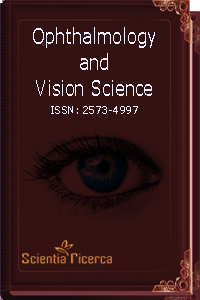
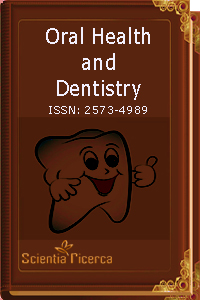
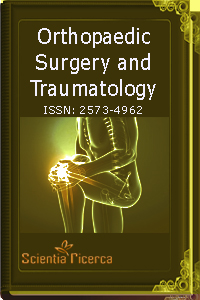
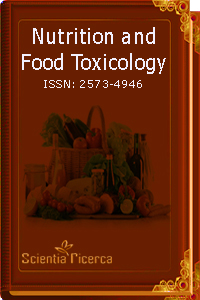
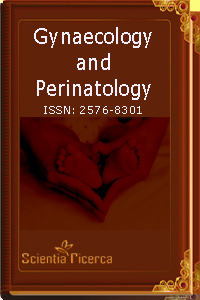
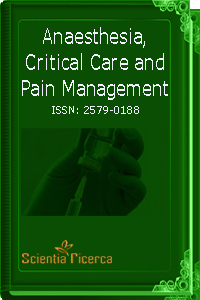
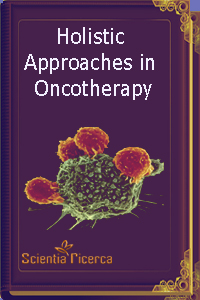
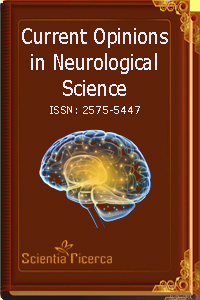
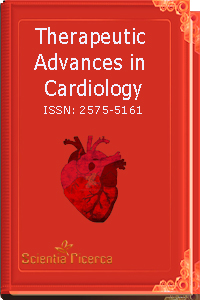
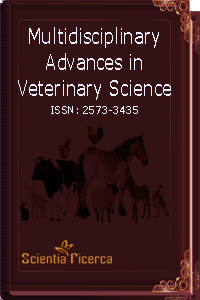
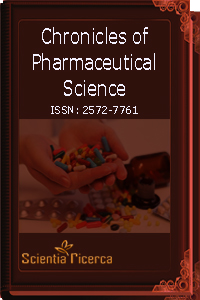
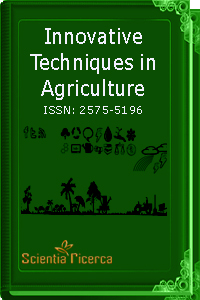
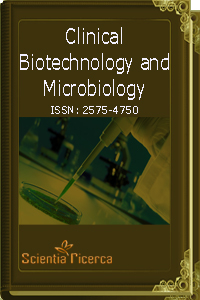
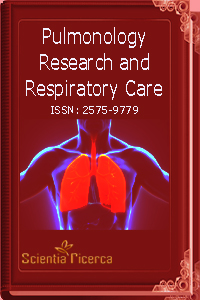
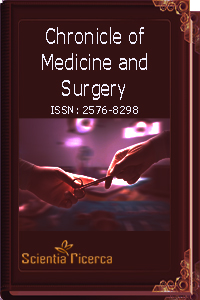

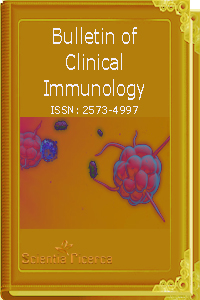
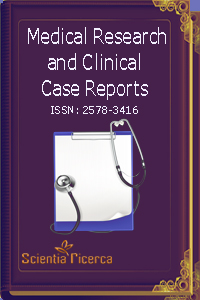
 Scientia Ricerca is licensed and content of this site is available under a Creative Commons Attribution 4.0 International License.
Scientia Ricerca is licensed and content of this site is available under a Creative Commons Attribution 4.0 International License.